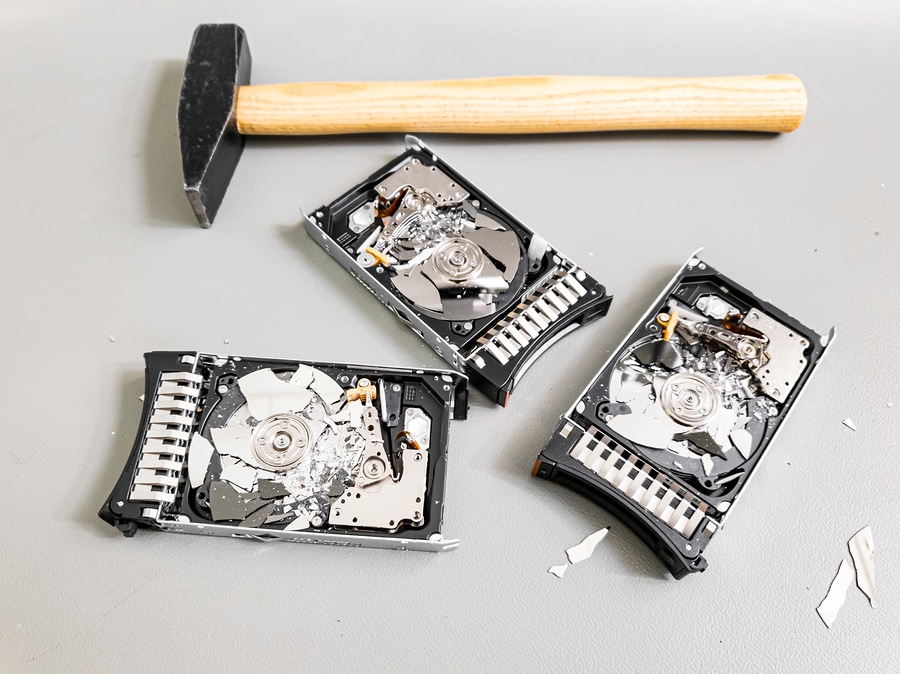How is Hard Drive Destruction Different from Other Disposal Methods?

Disposal of digital data has become a hot topic over the last couple of decades as South Dakota businesses have migrated to digital storage. It remains a topic of conversation for the simple fact that technology continues to advance, creating new opportunities for hackers to steal confidential data. In addition, people persist in believing that unsuitable methods of destruction are acceptable alternatives to options mandated by consumer privacy laws and strict regulations for medical, financial, and other industries.
Professional hard drive destruction is considered the gold standard when it comes to protecting consumer data, but why is it the preferred method? How does hard drive destruction compare to other disposal methods?
DIY Destruction
Some businesses continue to assume that they can destroy data on their own, but there’s a reason certain methods are approved – it’s because so many DIY options simply don’t work. For example, deleting data only removes files on your desktop. It doesn’t delete the data they contain, which can remain on your hard drive indefinitely.
Then there’s degaussing, or using a magnet to destroy data. First of all, this doesn’t actually destroy the data – it only makes it unreadable. In order to comply with consumer privacy laws, the data must be destroyed. Second, most magnets are not strong enough to cause any effect on hard drives. The machinery required to actually degauss a hard drive is extremely cost-prohibitive, and there are still no guarantees.
Finally, there are physical forms of DIY hard drive destruction, such as hitting them with a hammer, driving nails through them, or dipping them in an acid bath. Totally aside from the fact that these methods are dangerous, there’s absolutely no guarantee that the hard drives or the data they contain will be destroyed.
Wiping
Another method of destroying data is wiping, or data erasure. This method actually does comply with consumer privacy laws, but only if it is done correctly. Can businesses do it on their own? They can certainly try, but some software solutions simply aren’t up to the task. If you’re going to choose wiping as a means of refurbishing and remarketing devices, it’s always best to work with a certified ITAD service provider that ensures compliance in the process.
Professional IT Asset Disposition
So, how does hard drive destruction measure up to these other methods? When you partner with a professional ITAD service provider, your hard drives will be shredded using industrial equipment, ensuring that data recovery is impossible.
Even better, when devices are collected at your location by your mobile shredding service, you can watch while they’re shredded on-site, for your peace of mind. A certified ITAD service provider operates in compliance with all applicable privacy and environmental laws, so you don’t have to worry about it, and provides you with a Certificate of Destruction and Recycling for your records when the job is done.
If you’re interested in the benefits of hard drive destruction for your South Dakota business, don’t hesitate to contact the experts at SEAM today at 605-274-7326 (SEAM) or online to request a quote.
SEAM provides IT recycling and data destruction services including onsite shredding and hard drive wiping to South Dakota, North Dakota, Minnesota, Iowa, and Nebraska.
Schedule a pickup or contact us for more information.





